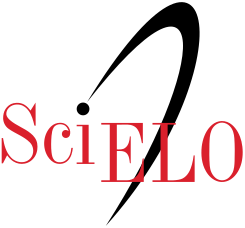Encuadre del mensaje y autoeficacia. Un análisis en campañas sociales de salud en jóvenes españoles
DOI:
https://doi.org/10.32870/cys.v2022.8402Palabras clave:
Marketing social, Campañas de salud, Encuadre, Emociones, AutoeficaciaResumen
El presente estudio tiene como objetivo examinar la eficacia de tres campañas de salud con diferente tipo de encuadre dirigidas a jóvenes durante la pandemia por COVID-19. También analizamos el impacto emocional de cada campaña, así como el papel de la autoeficacia en el éxito de las campañas examinadas. Los resultados muestran que el mensaje más moderado y menos explícito, pero más cercano a la realidad de los jóvenes, tuvo un impacto emocional más eficaz. Además, en cuanto a la autoeficacia, los resultados revelan su papel discriminativo en el éxito de las campañas analizadas.Descargas
Citas
Avery, E. J., Kim, M. & Park, S. (2020). Self-efficacy and other considerations in performance of risk-reducing behaviors during a major disease outbreak. Journal of Health Communication, 26(2), 112-120. https://doi.org/10.1080/10810730.2020.1821131
Azjen, I. (1991). The theory of planned behavior. Organizational Behavior and Human Decision Proceses, 50, 179-211. https://doi.org/10.1016/0749-5978(91)90020-T
Bagozzi, R. P., Gopinath, M. & Nyer, P. U. (1999). The role of emotions in marketing. Journal of the Academy of Marketing Science, 27(2), 184-206. https://doi.org/10.1177/0092070399272005
Bandura, A. (1993). Perceived Self-Efficacy in Cognitive Development and Functioning. Educational Psychologist, 28(2), 117-148. https://doi.org/10.1207/s15326985ep2802_3
Bertolotti, M., Carfora, V. & Catellani, P. (2020). Different frames to reduce red meat intake: the moderating role of self-efficacy. Health Communication, 35(4), 475-482. https://doi.org/10.1080/10410236.2019.1567444
Borawska, A., Oleksy, T. & Maison, D. (2020). Do negative emotions in social advertising really work? Confrontation of classic vs. EEG reaction toward advertising that promotes safe driving. PLoS ONE, 15(5), 1-20. https://doi.org/10.1371/journal.pone.0233036
Brehm, S. S. & Brehm, J. W. (1981). Psychological reactance: A theory of freedom and control. Academic Press.
Brusse, E. D. A., Fransen, M. L. & Smit, E. G. (2017). Framing in Entertainment-Education: Effects on Processes of Narrative Persuasion. Health Communication, 32(12), 1501-1509. https://doi.org/10.1080/10410236.2016.1234536
Cacciatore, M. A., Scheufele, D. A. & Iyengar, S. (2016). The End of Framing as We Know It … and the Future of Media Effects. Mass Communication and Society, 19(1), 7-23. https://doi.org/10.1080/15205436.2015.1068811
Canto, E. G., Guillamon, A. R. & López, L. N. (2021). Nivel de actividad física, consumo habitual de tabaco y alcohol, y su relación con la calidad de vida en adolescentes españoles. Retos: nuevas tendencias en educación física, deporte y recreación, (39), 112-119. https://doi.org/10.47197/retos.v0i39.78489
Carfora, V. & Catellani, P. (2021). The Effect of Persuasive Messages in Promoting Home-Based Physical Activity During COVID-19 Pandemic. Frontiers in Psychology, 12, 1-14. https://doi.org/10.3389/fpsyg.2021.644050
Cesario, J., Higgins, E. T. & Scholer, A. A. (2008). Regulatory Fit and Persuasion: Basic Principles and Remaining Questions. Social and Personality Psychology Compass, 2(1), 444-463. https://doi.org/10.1111/j.1751-9004.2007.00055.x
Cho, H. & Lee, J. S. (2015). The influence of self-efficacy, subjective norms, and risk perception on behavioral intentions related to the H1N1 flu pandemic: A comparison between Korea and the US. Asian Journal of Social Psychology, 18(4), 311-324. https://doi.org/10.1111/ajsp.12104
Chou, W. Y. S., & Budenz, A. (2020). Considering emotion in COVID-19 vaccine communication: addressing vaccine hesitancy and fostering vaccine confidence. Health Communication, 35(14), 1718-1722. https://doi.org/10.1080/10410236.2020.1838096
Cueva-Estrada, J. M., Sumba-Nacipucha, N. A. & Delgado-Figueroa, S. P. (2021). Marketing social y su incidencia en el comportamiento del consumidor. Revista Venezolana De Gerencia, 26(95), 852-867. https://doi.org/10.52080/rvgluz.27.95.25
D'Amico, E. J., Rodriguez, A., Tucker, J. S., Dunbar, M. S., Pedersen, E. R., Shih, R. A., Davis, J. P. & Seelam, R. (2020). Early and late adolescent factors that predict co-use of cannabis with alcohol and tobacco in young adulthood. Prevention Science, 21(4), 530-544. https://doi.org/10.1007/s11121-020-01086-7
Deng, T., Ekachai, D. & Pokrywczynski, J. (2020). Global COVID-19 Advertisements: Use of Informational, Transformational and Narrative Advertising Strategies. Health Communication, 37(5), 628-636. https://doi.org/10.1080/10410236.2020.1859725
Gallagher, K. M. & Updegraff, J. A. (2012). Health message framing effects on attitudes, intentions, and behavior: A meta-analytic review. Annals of Behavioral Medicine, 43(1), 101-116. https://doi.org/10.1007/s12160-011-9308-7
Grande, I. & Abascal, E. (2017). Fundamentos y técnicas de investigación comercial. Esic Editorial.
Green, M. C. & Brock, T. C. (2000). The role of transportation in the persuasiveness of public narratives. Journal of Personality and Social Psychology, 79(5), 701-721. https://doi.org/10.1037/0022-3514.79.5.701
Grigoryan, N. (2019). Ethics of a Social Marketing Campaign: An Integrative Assessment Model. Journal of Media Ethics: Exploring Questions of Media Morality, 34(2), 114-127. https://doi.org/10.1080/23736992.2019.1600406
Guenther, L., Gaertner, M. & Zeitz, J. (2021). Framing as a concept for health communication: A systematic review. Health Communication, 36(7), 891-899. https://doi.org/10.1080/10410236.2020.1723048
Heffner, J., Vives, M. & Feldmanhall, O. (2021). Emotional responses to prosocial messages increase willingness to self- isolate during the COVID-19 pandemic. Personality and Individual Differences, 170, 110420. https://doi.org/10.1016/j.paid.2020.110420
Hernán, M., Ramos, M. & Fernández, A. (2001). Revisión de los trabajos publicados sobre promoción de la salud en jóvenes españoles. Revista Española de Salud Pública, 75(6), 491-504. https://recyt.fecyt.es/index.php/RESP/article/view/849
Machado, N. M., Gomide, H. P., Bernardino, H. S. & Ronzani, T. M. (2019). Facebook recruitment of smokers: comparing gain-and loss-framed ads for the purposes of an Internet-based smoking cessation intervention. Cadernos de Saude Publica, 35(10). https://doi.org/10.1590/0102-311x00151318
Missaglia, A. L., Oppo, A., Mauri, M., Ghiringhelli, B., Ciceri, A. & Russo, V. (2017). The impact of emotions on recall: An empirical study on social ads. Journal of Consumer Behaviour, 16(5), 424-433. https://doi.org/10.1002/cb.1642
Moyer-Gusé, E., Mahood, C. & Brookes, S. (2011). Entertainment-Education in the Context of Humor: Effects on Safer Sex Intentions and Risk Perceptions. Health Communication, 26(8), 765-774. https://doi.org/10.1080/10410236.2011.566832
Mullinix, K. J., Leeper, T. J., Druckman, J. N. & Freese, J. (2015). The generalizability of survey experiments. Journal of Experimental Political Science, 2(2), 109-138. https://doi.org/10.1017/XPS.2015.19
Nivette, A., Ribeaud, D., Murray, A., Steinhoff, A., Bechtiger, L., Hepp, U., Shanahan, L. & Eisner, M. (2021). Non-compliance with COVID-19-related public health measures among young adults in Switzerland : Insights from a longitudinal cohort study. Social Science & Medicine, 268, 113370. https://doi.org/10.1016/j.socscimed.2020.113370
O’Keefe, D. J. & Jensen, J. D. (2007). The relative persuasiveness of gain-framed and loss-framed messages for encouraging disease prevention behaviors: A meta-analytic review. Journal of Health Communication, 12(7), 623-644. https://doi.org/10.1080/10810730701615198
Ortega-Gaucin, D. & Peña-García, A. (2016). Análisis crítico de las campañas de comunicación para fomentar la “cultura del agua” en México. Comunicación y Sociedad, (26), 223-246. https://doi.org/10.32870/cys.v0i26.1171
Prasad-Singh, J., Sewda, A. & Shiv, D. G. (2020). Assessing the Knowledge, Attitude and Practices of Students Regarding the COVID-19 Pandemic. Journal of Health Management, 22(2), 281-290. https://doi.org/10.1177/0972063420935669
Rodelo, F. V. & Muñiz, C. (2017). Uso del análisis de conglomerados para la detección de encuadres noticiosos en el tratamiento periodístico de la Iniciativa Mérida. Comunicación y Sociedad, (27), 53-77. https://doi.org/10.32870/cys.v0i27.4792
Rogers, R. W. (1975). A Protection Motivation Theory of Fear Appeals and Attitude Change1. The Journal of Psychology, 91(1), 93-114. https://doi.org/10.1080/00223980.1975.9915803
Rosenstock, I. M. (1974). The Health Belief Model and Preventive Health Behavior. Health Education & Behavior, 2(4), 354-386. https://doi.org/10.1177/109019817400200405
Roskos-Ewoldsen, D. R., Yu, H. J. & Rhodes, N. (2007). Fear appeal messages affect accessibility of attitudes toward the threat and adaptive behaviors. Communication Monographs, 71(1), 49-69. https://doi.org/10.1080/0363452042000228559
Shen, F., Sheer, V. C. & Li, R. (2015). Impact of narratives on persuasion in health communication: A meta-analysis. Journal of Advertising, 44(2), 105-113. https://doi.org/10.1080/00913367.2015.1018467
Shmueli, L. (2021). Predicting intention to receive COVID-19 vaccine among the general population using the health belief model and the theory of planned behavior model. BMC Public Health, 21(1), 1-13. https://doi.org/10.1186/s12889-021-10816-7
Sobkow, A., Zaleskiewicz, T., Petrova, D., Garcia-Retamero, R. & Traczyk, J. (2020). Worry, Risk Perception, and Controllability Predict Intentions Toward COVID-19 Preventive Behaviors. Frontiers in Psychology, 11, 1-15. https://doi.org/10.3389/fpsyg.2020.582720
Strachan, S. M., Myre, M., Berry, T. R., Ceccarelli, L. A., Semenchuk, B. N. & Miller, C. (2020). Self-affirmation and physical activity messages. Psychology of Sport and Exercise, 47, 101613. https://doi.org/10.1016/j.psychsport.2019.101613
Tannenbaum, M. B., Hepler, J., Zimmerman, R. S., Saul, L., Jacobs, S., Wilson, K. & Albarracín, D. (2015). Supplemental Material for Appealing to Fear: A Meta-Analysis of Fear Appeal Effectiveness and Theories. Psychological Bulletin, 141(6), 1178-1204. https://doi.org/10.1037/a0039729
Van’t-Riet, J., Ruiter, R. A. C., Werrij, M. Q. & De Vries, H. (2008). The influence of self-efficacy on the effects of framed health messages. European Journal of Social Psychology, 38(5), 800-809. https://doi.org/10.1002/ejsp.496
Witte, K. & Allen, M. (2000). A meta-analysis of fear appeals: Implications for effective public health campaigns. Health Education and Behavior, 27(5), 591-615. https://doi.org/10.1177/109019810002700506
Wright, K. B., Sparks, L. & O’Hair, H. D. (2008). Health communication in the 21st century. Blackwell Publishing.
Yoon, H. J. & Tinkham, S. F. (2013). Humorous threat persuasion in advertising: The effects of humor, threat intensity, and issue involvement. Journal of Advertising, 42(1), 30-41. https://doi.org/10.1080/00913367.2012.749082
Descargas
Publicado
Cómo citar
Número
Sección
Licencia
Derechos de autor 2022 Susana Fernandez Lores, Natividad Crespo-Tejero, Ruth Fernández-Hernández

Esta obra está bajo una licencia internacional Creative Commons Atribución-NoComercial 4.0.
Los autores/as que publiquen en esta revista aceptan las siguientes condiciones:
De acuerdo con la legislación de derechos de autor, los autores conservan los derechos de autoría y otorgan a Comunicación y Sociedad el derecho de primera comunicación pública de la obra. Comunicación y Sociedad no realiza cargos a los autores por enviar y procesar artículos para su publicación.
Los autores/as pueden realizar otros acuerdos contractuales independientes y adicionales para la distribución no exclusiva de la versión del artículo publicado en Comunicación y Sociedad (por ejemplo incluirlo en un repositorio institucional o publicarlo en un libro) siempre que indiquen claramente que el trabajo se publicó por primera vez en Comunicación y Sociedad.











